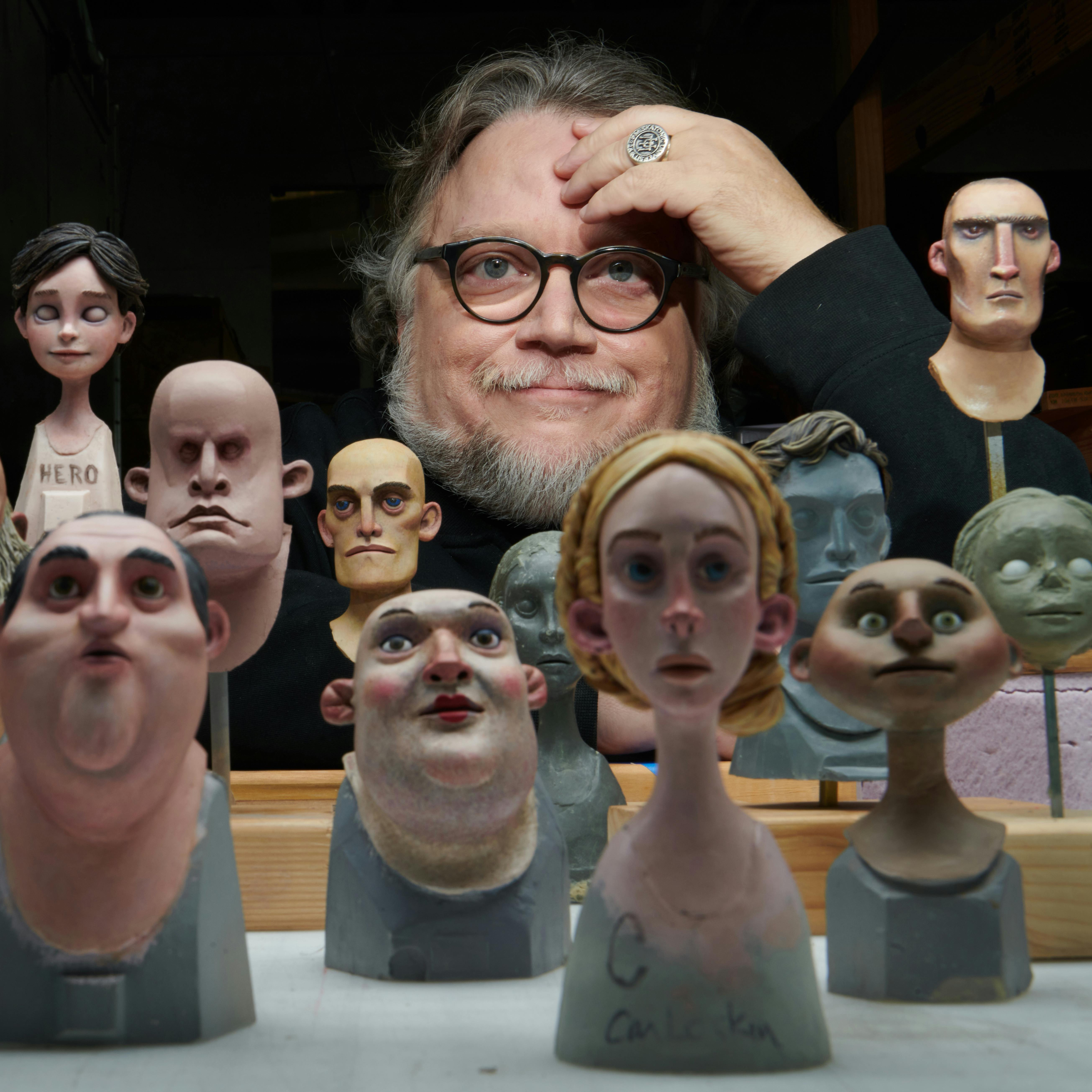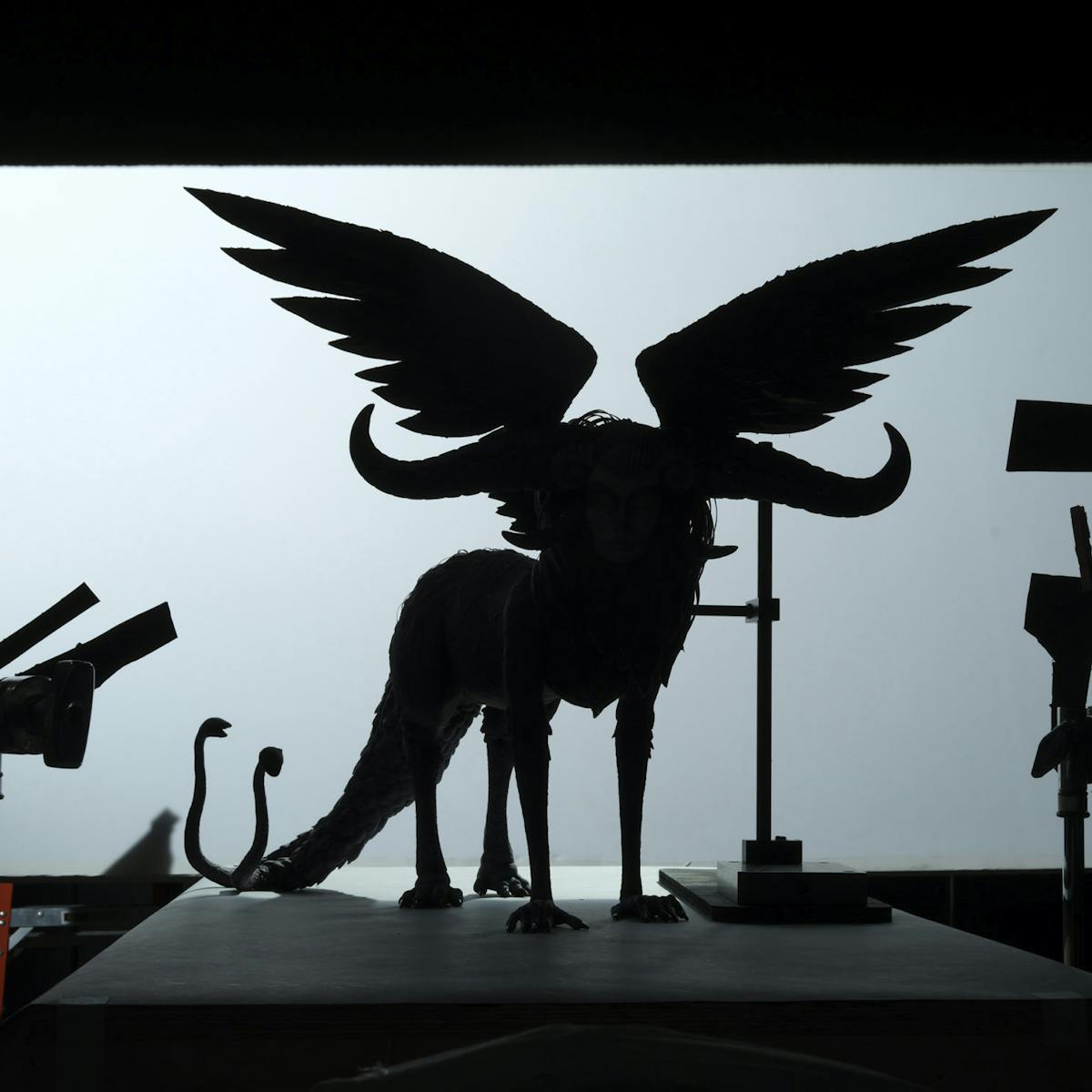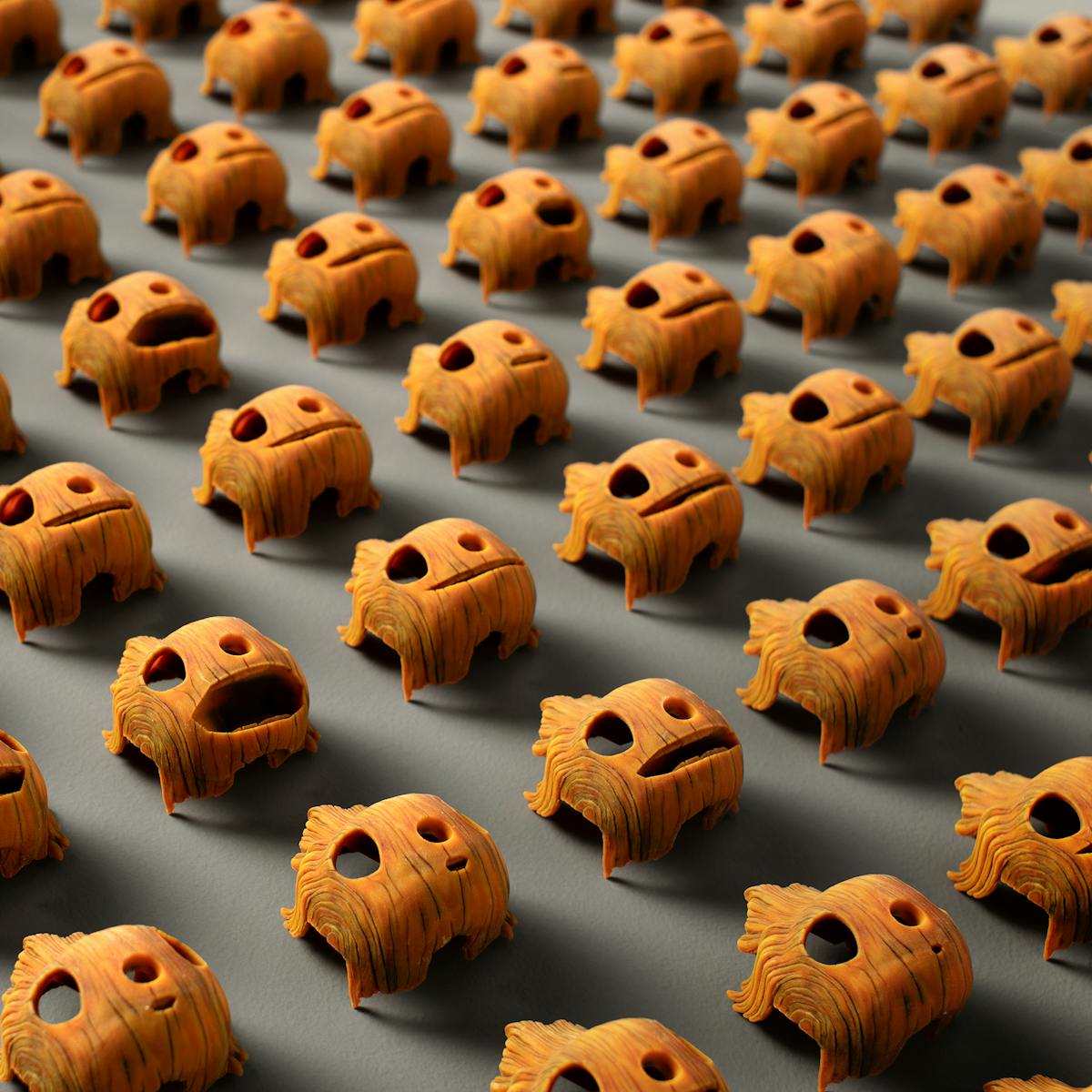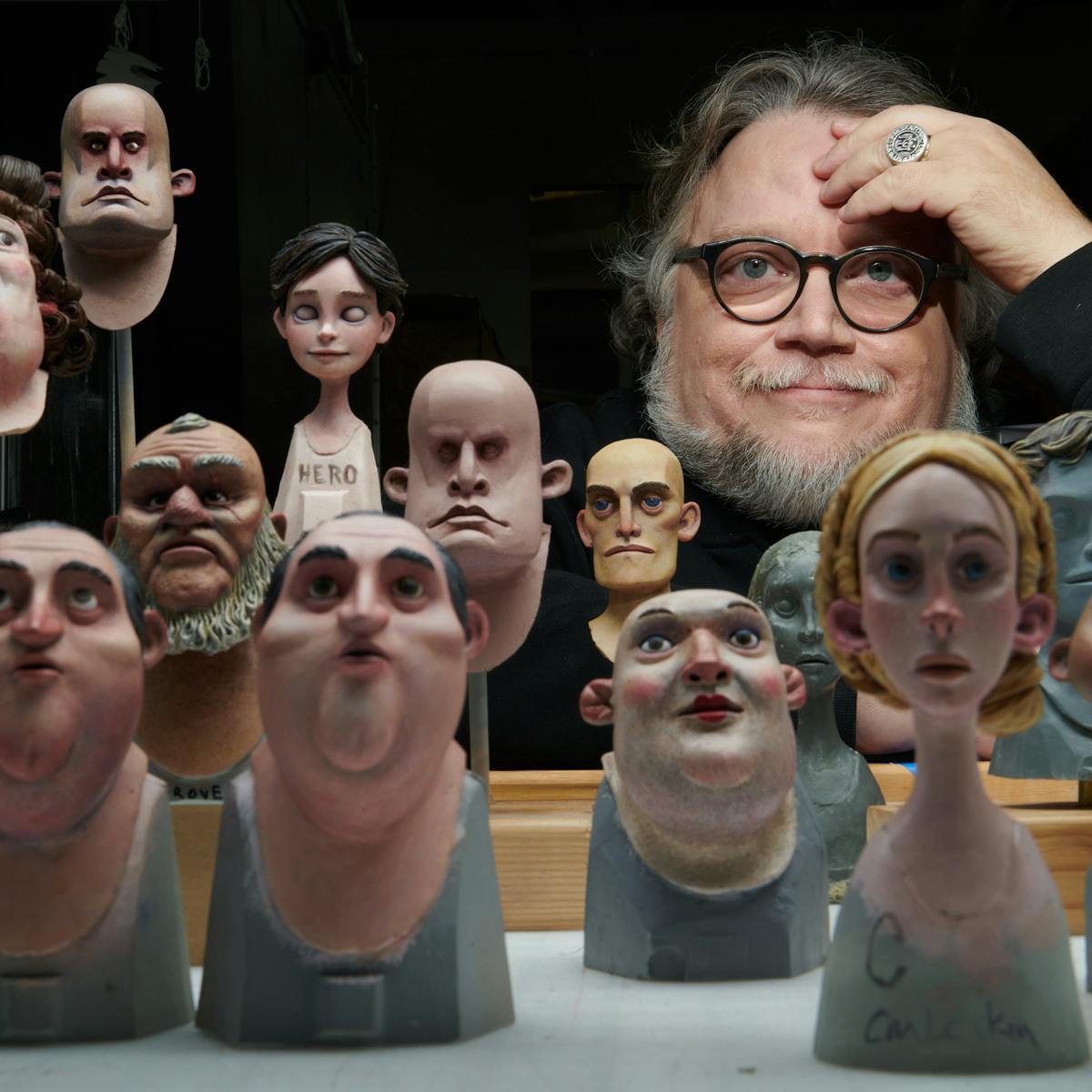Guillermo del Toro is a rare filmmaker, one with the ability to completely transport his audience to fantastical new worlds that feel both incredibly tangible and painfully familiar. Beginning with the release of his unconventional vampire tale Cronos, which netted top honors at 1993’s Ariel Awards, del Toro has commanded widespread respect for what many have described as his directorial magic touch. In 2007, he earned Oscar glory stateside with his gorgeous, creature-filled fable Pan’s Labyrinth, taking home awards for three of the film’s six nominations. Del Toro continued his pursuit of unusually captivating tales, earning more Oscars — for Best Director and Best Picture — for 2017’s sci-fi inflected romance The Shape of Water; his subsequent drama, the film-noir-inspired Nightmare Alley was nominated for Best Picture as well.
Yet despite his impressive track record and the fandom it’s inspired, del Toro labored for decades to bring his latest film, the stop-motion animated feature, Guillermo del Toro’s Pinocchio, to the screen. The bold reimagining of Carlo Collodi’s classic Italian fairy tale, co-directed with stop-motion veteran Mark Gustafson (Fantastic Mr. Fox), unfolds in Benito Mussolini’s Italy and has an unmistakably bittersweet tone, which made the process of finding backers challenging. “A career is basically a car accident in slow motion. It happens over decades, but you have little control of what gets financed and what doesn’t get financed,” del Toro says. “The last two weeks, I got two projects rejected. I have 34 screenplays written, and I have only made 12 movies.”
Although it was so long in the making, Pinocchio’s backdrop of ascendant fascism feels bracingly relevant, while its central focus — the turbulent relationship between imperfect father Geppetto (David Bradley) and his errant puppet son (newcomer Gregory Mann) — is timeless. The film also notably dispenses with the idea that Pinocchio must strive to become a real boy to earn Geppetto’s love. Instead, del Toro, who co-wrote the screenplay with Patrick McHale (Over the Garden Wall), wanted the old woodcarver to appreciate the impish boy for he is who and to learn to treasure their remaining days together.
“There is an underlying theme that is very, very profound for me, which is to understand that the metronome of life is death,” del Toro says. “There’s no tragedy in going; there’s a tragedy in wasting our lives while we are together. That is very profound for me and very heartfelt because I lost my dad about five years ago, after The Shape of Water, and I lost my mom the day before the [London Film Festival] premiere of Pinocchio. I’ve really come to understand that I am in the last quarter of my life. I’m 58, and I have one quarter [left] to make good for the people that are going to stay behind. It’s a deep reflection for me.”
An edited version of Krista Smith’s conversation with del Toro follows.

Guillermo del Toro
Krista Smith: What was your first encounter with Carlo Collodi’s Pinocchio?
Guillermo del Toro: The first time I read Collodi, I was probably in my 20s. Just out of curiosity, I wanted to read the source. He would publish it in chapters, so it has a very episodic nature. What I loved about it is this idea of two characters that are father and son who split into different journeys and [later] reunite. That idea, I think, is gorgeous and simple — and the idea of Pinocchio learning to construct his own view of the world by experience.
In your Pinocchio, there’s such a focus on the father-son relationship and Geppetto is not perfect. He says some horribly cruel things, telling Pinocchio he’s a burden.
GDT: And he drinks and he’s ill-tempered. The thing that we wanted to do was to do a Pinocchio that was hyperactive, hard to control. Right from the beginning, he is not a pleasant, angelic little creature. And we wanted a Geppetto that was irascible or was in way over his head with this [puppet]. That makes the movie real. There are two things that are very different with this Pinocchio. Contrary to [every other version of] Pinocchio, disobedience here is a virtue. And contrary to [every] other Pinocchio, it’s Pinocchio that transforms the people around him, [instead of] transforming himself to please and be accepted by the people around him. Geppetto and the Cricket learn from him. Geppetto starts the film talking about perfection: Look at this pinecone. It’s not perfect. We’ve got to find a perfect one. He ends up embracing [Pinocchio] on the beach [near the end of the film] and he says, “Be who you are, exactly as you are.” And, “I love you.”
The movie also contains a great deal of Catholic iconography. What is your relationship with Catholicism these days?
GDT: I love the teachings. I love the stories. I don’t like the organization. But I am a man that is introspective, that lives his life trying to be fair and just. I try to act according to the basic principle of “do unto others,” but I am not practicing. I don’t believe that you have a limited time to pray, and you have to do it in a certain place. Alfonso Cuarón makes fun of me. He says, “You’re really a Catholic filmmaker because in all your movies, happiness begins after death.” I think he has a point. It was very moving for me to do Pinocchio because he stays alive — that’s the difference from all my other movies. He stays alive after everybody [else] dies. And this is what made it very difficult to finance — I tried to explain to people how actually life-affirming and emotional and beautiful the movie was [even though] the theme was death. The paradox is when you talk about death, you really are talking about life. And that’s what makes it moving. If life doesn’t end, it never began.
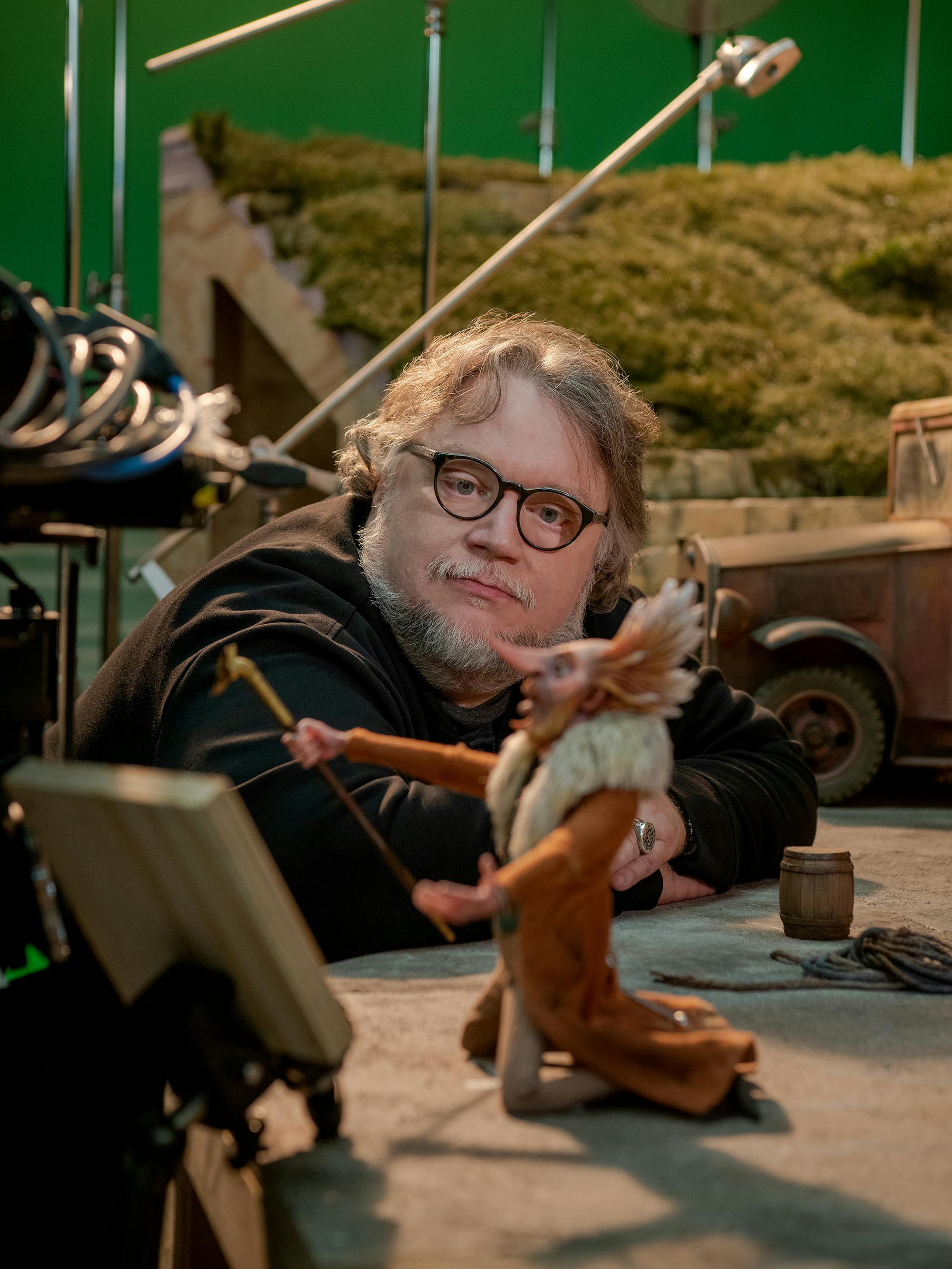
Guillermo del Toro and Count Volpe (Christoph Waltz)
There’s also incredible action in this Pinocchio — there’s a bombing at the fascist re-education camp, and an underwater escape from the dogfish. For the viewer, the experience is no different from watching a live-action film. The adrenaline feels the same. The stakes feel the same.
GDT: Even people that are in animation have a hard time figuring out how stop-motion is done. It is an incredibly artistic, deep-dive universe that, fortunately for me, I [have] lived in since I was a child. I know it. So my vernacular with my co-director and animators was seamless. But it is analogous to live-action. We are photographing real little sets with real little props. We have miniaturized the fabrics. We have miniaturized the weaving, the color, the patterns. Every character is about 12 inches tall. And the universe you create is not a miniature — it’s a maxiture. The church is really big, but everything is detailed with reference photographs. There’s real cinematography, and it’s as complex as live-action. It is like [what’s said about] Ginger Rogers [versus] Fred Astaire; we do the same steps that [live-action does], but backward, in high heels.
Did your approach to the creative process change during the years you were in production? Does any kind of tension arise with something that takes this long and is this complex?
GDT: Well, to be completely candid, we tackled a movie that was almost superhuman to do. The demand that I placed on everybody in this film — I said, “We will always give 100 percent of ourselves 100 percent of the time.” I said, “We will only be as good as our worst shot.” We did things that normally are not done in stop motion. We actually reshot about 30, 35 shots because I [could] see the character moving, but I didn’t feel what the character was thinking or feeling. I said, “I don’t want motion; I want emotion.” And it was very, very taxing because up to the last day everybody thought I would ease up, but [I did not, even when] there were no animators left. Mark went in and animated the last shot of the production himself because there was a mismatch in the move. So, the rigor in this movie started on day one and didn’t end until we finished shooting.
The other thing that we did that was very transformative was [deciding] we don’t want pantomime in the acting style. We want naturalistic, thoughtful, emotional animation that can be “quiet” because animation can be very sitcom-y, overactive, over-hyper. The camera moves all over the place. The characters move all over the place. And in my opinion, to mature into the style that we had in the acting takes not only a lot of effort, but [also required the] animators to understand that we didn’t want a “gag.” People make mistakes. Geppetto stumbles on a bottle on the floor or gets into a fight with a floating balloon and gets a little tangled with it. But none of those were played for a gag; they were played for naturalism. This is a movie that has a huge degree of naturalism in the acting.
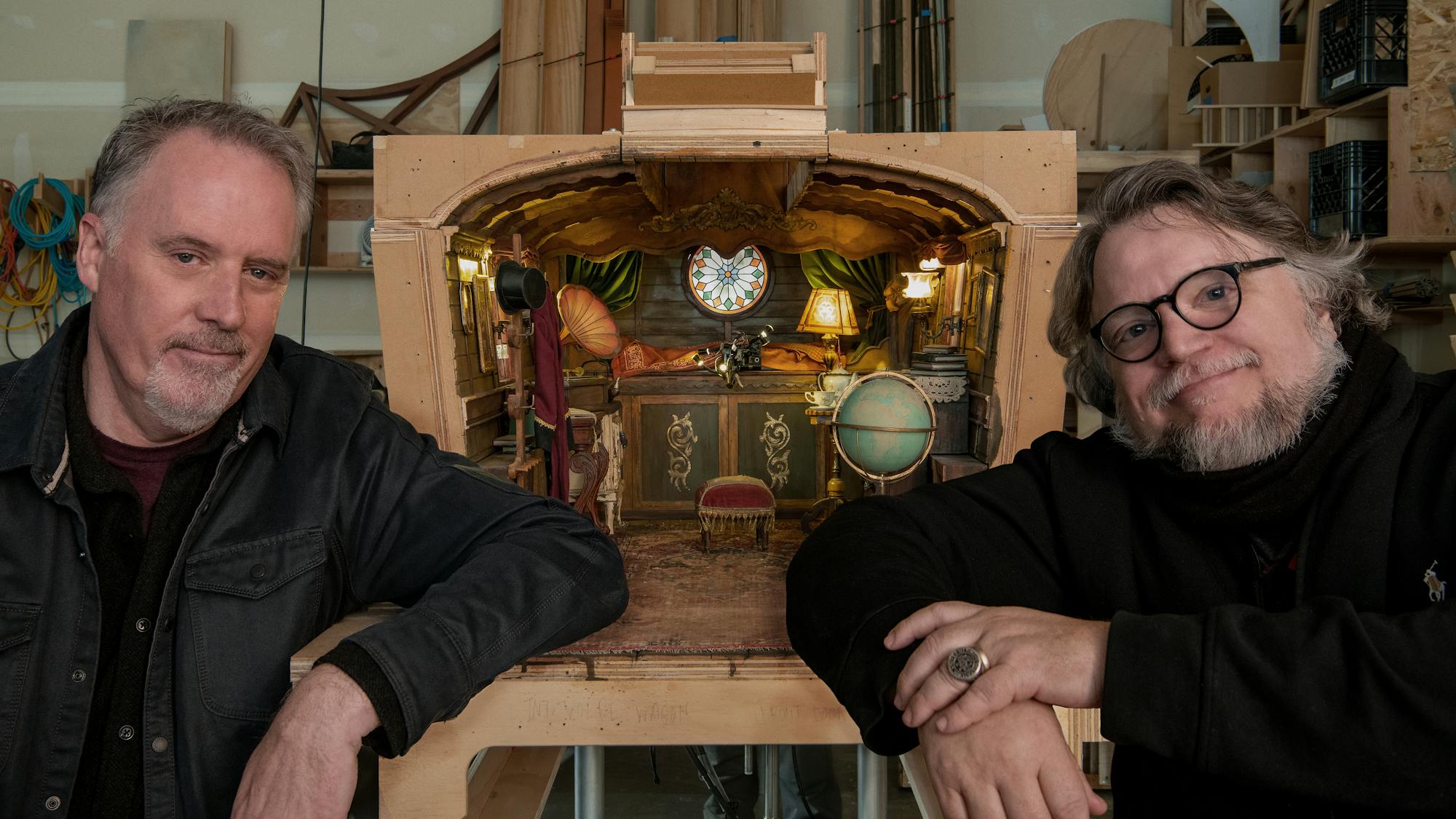
Mark Gustafson and Guillermo del Toro
You see that, of course, even with some of the more monstrous characters — which is hardly surprising. You’ve brought empathy and dimension to the creatures and monsters that appear throughout your work. As a child, was there a time when monsters truly terrified you? How did you come to view them through a lens of fragility and loss?
GDT: I was a melancholic child since I was a baby. When I was a kid, I was a quiet boy, an observer, not a participant. I was very scared to the point where I developed what psychiatrists or psychologists would call a counterphobic reaction, which means the things that scared me the most I fell in love with to cope. That is the origin probably of my love of monsters. But the other thing that I truly felt as a kid is that monsters were the incarnation of the permission to be imperfect — the permission to not be the active, sporty, happy, sunny boy that everybody seemed to consider an ideal, that it was okay to be in the darkness or reading a book and being quiet. The thing that you long for the most, which is in Pinocchio, is to be seen by your parents as an ideal son or an ideal child no matter what you do because that’s who you are. The monsters represent many things, and they represent the possibility to exist in imperfection for me.
I want to take you back to Oscar night 2018. The Shape of Water wins four Oscars: Director, Best Picture, Music, and Production Design. And it was nominated for many more. What was that like for you?
GDT: I must say there are two answers. One, to make The Shape of Water was so difficult that I felt great satisfaction on a really intimate spiritual level. There is a thing nobody sees at home but you live: Imagine that you’re shooting this in P.O.V. [at the Oscars]. You’re in your seat. You see your wife, or whoever, with your colleagues, your friends, and then the camera goes onstage climbing the steps, and then the camera turns and you see the entire theater. And the theater is applauding. There is a wave of love from your peers. The people you have admired, the directors you have looked up to, the designers, the cinematographers, the editors are there. And the wave of love is incredibly healing. It’s the single most healing moment I experienced up until then. There’s no way to explain it. Our profession is extremely hard to explain except to people that do it. It’s incredibly hard and incredibly precise, and it takes such time and effort and life that you say, “I’ve given my life for this art.” And in this moment, the art thanks you back. It’s incredible. It’s just beyond description.
And the thing that is beautiful — and this is important to say — is I got there doing what I do. I did not change. The times I’ve been there — I’ve been there with Nightmare Alley, with Pan’s Labyrinth, and The Shape of Water — I’ve been there with movies that I do. Pinocchio is what I do. It fits with Pan’s Labyrinth, it fits with The Devil’s Backbone, and that’s the satisfaction. Like Pinocchio, I didn’t have to change to be loved.
